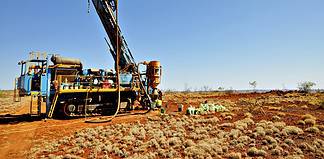Dense media separation produces up to 31.8% manganese concentrate

Dense media separation (DMS) has produced manganese concentrate grades of up to 31.8% from Black Canyon’s (ASX: BCA) KR1 and KR2 deposits in WA.
In late 2023, metallurgical sample preparation was completed on 400kg of reverse circulation drill chip samples from the KR1 and KR2 mineral resource estimate areas.
The samples were processed using large-scale dense media separation (DMS) equipment that simulates beneficiation processing used across mining operations to upgrade manganese and iron ore in the Pilbara.
The aim of this program was to produce a beneficiated manganese concentrate feedstock for use in upscaled hydrometallurgical testwork to develop and optimise the high-purity manganese sulphate monohydrate flowsheet.
Black Canyon managing director Brendan Cummins says the results confirm the company’s expectations.
“For the first time the company has utilised larger scale DMS equipment that is similar to beneficiation united used at existing manganese and iron ore mines in the Pilbara region,” he said.
“The results confirmed our expectation that Black Canyon will be able to deliver a quality oxide manganese concentrate ranging between 30 to 33% manganese, in-line with end user requirements.
“The results have achieved two key objectives of producing a consistent product using standard industry-based equipment and providing 100 to 150kg of 32% manganese concentrate that can be used for further hydrometallurgical testwork.”
The results will be used to inform the KR1 and KR2 scoping study assumptions which is progressing and expected to be completed by the end of the quarter.







































